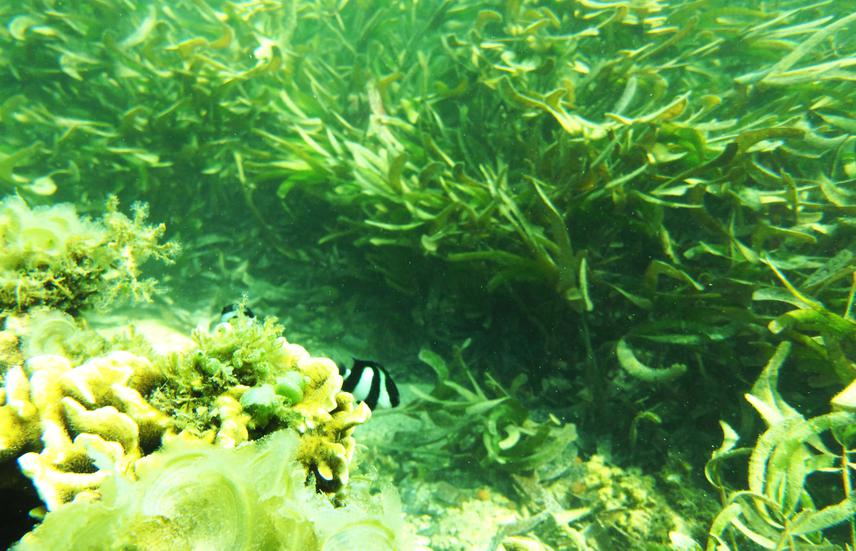Jonathan Pépin
Aware of the continuing deterioration of the seagrass ecosystem and the Great Reef of Toliara, these ecosystems need to be safeguarded. Until now, Madagascar's seagrass ecosystem has been less well known by the local community and in terms of research. The project is located in the Bay of Toliara in south-west Madagascar, where the intervention zone is clean at the seagrass ecosystem level.

Seagrass bed of Toliara Bay, south-west Madagascar. ©Jonathan Pepin.
The duration of this project is 12 months, starting in May 2024 and ending in April 2025. The overall aim is to establish sustainable management of seagrass beds in the Bay of Toliara. The specific aims are: to identify a local management plan to develop an effective model for the sustainability of this ecosystem; to raise awareness among local communities of the ecosystem services provided by seagrass beds; to determine the socio-economic use values of seagrass beds; to identify the threats and pressures weighing on seagrass beds; and to identify an effective seagrass restoration technique. Based on the ecosystem services of seagrass beds and sustainable fishing, environmental education and awareness-raising of local coastal communities are carried out through community meetings in each coastal villages of the Bay of Toliara, such as the villages of Sarodrano, Ankilibe, Akiembe-bas, Ankiembe-haut, Mahavatse-II and Ambohitsabo.
The socio-economic use values of seagrass beds and the local management plan are identified by means of an individual survey and focus group discussion of a written questionnaire and an interview based on the standard interview technique. Restoration of seagrass bed is based on transplantation of local species with volunteers from local community at the recently degraded and silted-up area of the seagrass beds. Two methods of transplantation will be used as Plug method and Staple method. As a research phase, the transplant area is two hectares of seagrass. For pressure, small-scale fishing is studied through surveys and monitoring of local fishermen and communities. Monitoring of small-scale fishing is based on the standard interview and recording the catch weight, an inventory of the species caught and the fishing gear used by the fishermen on each trip. For the survey, data collection is based on fishing time and fishing site. For the threat, the evolution of sedimentation in seagrass beds and the coral reef will be assessed using remote sensing.